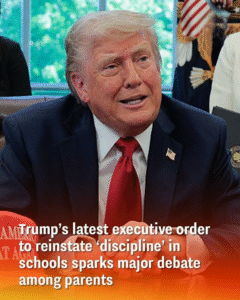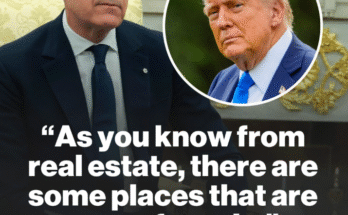On February 25, 2025, President Donald Trump signed a new executive order titled “Making America Healthy Again by Empowering Patients with Clear, Accurate, and Actionable Healthcare Pricing Information.” This order builds upon his 2019 initiative, Executive Order 13877, aimed at enhancing price transparency in the U.S. healthcare system. National Law Review+2NFP+2The White House+2National Law Review+4GovInfo+4The White House+4
Background: The 2019 Initiative
In 2019, Executive Order 13877 directed hospitals and insurers to disclose pricing information, including negotiated rates and out-of-pocket costs, to empower consumers to make informed healthcare decisions. This led to the Centers for Medicare & Medicaid Services (CMS) issuing rules requiring hospitals to publish standard charges for services in a consumer-friendly format. CMS+1American Hospital Association+1
The 2025 Executive Order: Reinforcing Transparency
The 2025 executive order mandates the Departments of Health and Human Services (HHS), Labor, and the Treasury to develop a framework within 90 days to enforce existing price transparency requirements more effectively. Key directives include:Healthcare Dive+1NFP+1NFP
-
Issuing updated guidance to ensure pricing information is standardized and easily comparable across health plans.NFP
-
Enhancing enforcement mechanisms against noncompliant hospitals and insurers.Newsweek+1Reuters+1
-
Improving accessibility of pricing data for consumers.
Challenges and Industry Response
Despite initial efforts, compliance with transparency rules has been inconsistent. Many hospitals have been slow to publish required pricing information, and when they do, the data is often presented in formats that are difficult for consumers to interpret. Additionally, the sheer volume and complexity of the data can overwhelm patients, limiting its usefulness. Reuters
The healthcare industry has expressed concerns about the potential impact of full price transparency. Hospitals argue that disclosing negotiated rates could lead to higher prices if providers with lower rates adjust their prices after seeing competitors’ rates. They also warn that such measures could jeopardize financial stability and limit patient access to care. Axios
Looking Ahead
The 2025 executive order signifies the administration’s commitment to making healthcare pricing more transparent. However, the effectiveness of these measures will depend on the successful implementation of standardized, user-friendly data formats and robust enforcement mechanisms. As the agencies work to fulfill the order’s directives, the healthcare industry and consumers alike will be watching closely to see how these changes impact the cost and accessibility of care.
On February 25, 2025, President Donald Trump signed a new executive order titled “Making America Healthy Again by Empowering Patients with Clear, Accurate, and Actionable Healthcare Pricing Information.” This order builds upon his 2019 initiative, Executive Order 13877, aimed at enhancing price transparency in the U.S. healthcare system. National Law Review+2NFP+2The White House+2National Law Review+4GovInfo+4The White House+4
Background: The 2019 Initiative
In 2019, Executive Order 13877 directed hospitals and insurers to disclose pricing information, including negotiated rates and out-of-pocket costs, to empower consumers to make informed healthcare decisions. This led to the Centers for Medicare & Medicaid Services (CMS) issuing rules requiring hospitals to publish standard charges for services in a consumer-friendly format. CMS+1American Hospital Association+1
The 2025 Executive Order: Reinforcing Transparency
The 2025 executive order mandates the Departments of Health and Human Services (HHS), Labor, and the Treasury to develop a framework within 90 days to enforce existing price transparency requirements more effectively. Key directives include:Healthcare Dive+1NFP+1NFP
-
Issuing updated guidance to ensure pricing information is standardized and easily comparable across health plans.NFP
-
Enhancing enforcement mechanisms against noncompliant hospitals and insurers.Newsweek+1Reuters+1
-
Improving accessibility of pricing data for consumers.
Challenges and Industry Response
Despite initial efforts, compliance with transparency rules has been inconsistent. Many hospitals have been slow to publish required pricing information, and when they do, the data is often presented in formats that are difficult for consumers to interpret. Additionally, the sheer volume and complexity of the data can overwhelm patients, limiting its usefulness. Reuters
The healthcare industry has expressed concerns about the potential impact of full price transparency. Hospitals argue that disclosing negotiated rates could lead to higher prices if providers with lower rates adjust their prices after seeing competitors’ rates. They also warn that such measures could jeopardize financial stability and limit patient access to care. Axios
Looking Ahead
The 2025 executive order signifies the administration’s commitment to making healthcare pricing more transparent. However, the effectiveness of these measures will depend on the successful implementation of standardized, user-friendly data formats and robust enforcement mechanisms. As the agencies work to fulfill the order’s directives, the healthcare industry and consumers alike will be watching closely to see how these changes impact the cost and accessibility of care.
